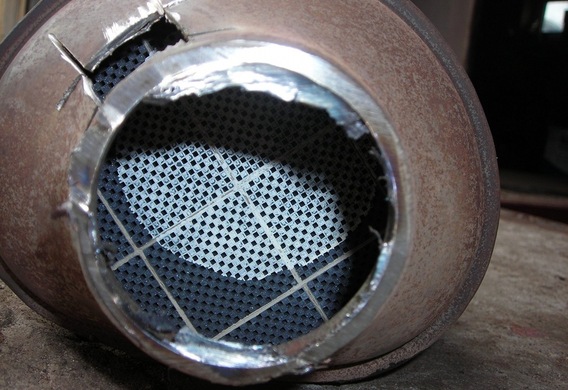
The particulate filter (DPF) is necessary for the delay of the particulate matter in the diesel exhaust. The beige filters began to be installed on diesel vehicles in 2001, and they became mandatory in 2009. The use of the particulate filter reduces the carbon black in the diesel vehicle by 80 to 90%.
The particulate filter may be a separate component or part of the catalytic converter (the particulate filter. The particulate filter has two phases:
1. Exhaust gas filtering
2. Regenation
During filtration, large particles of soot settle on the walls of the filter. The soot filter on the walls begins to interfere with the exhaust gas. Therefore, the filter needs cleaning, which is called regeneration.
Regeneration depends on the type of particulate trap. The following types of particulate filter are the most common:
1. Coating filter. The filter shall be installed over the exhaust manifold. Inside the filter is a cellular ceramic matrix with channels, alternately closed with one side and the other. The walls of the canals are porous, they filter the exhaust gas. On the wall is a thin layer of titanium that acts as a catalyst. The catalyst contributes to the oxidation of hydrocarbons.
The regeneration of such a filter can be active or passive:
1.1. In the case of passive regeneration, unburned particles are oxidizes due to the catalyst and high temperature of the exhaust gas
1.2. Active regeneration occurs at elevated temperature, which creates an engine control unit. When the temperature is high, the soot in the filter is burned.
2. A French Peugeot-Citroen (FAP) particulate filter (FAP) has been developed. This filter is an independent node and is installed as a catalyst. The regeneration of the filter also occurs, as in the case of a catalytic particulate filter, when raising the temperature of the exhaust gases, only in this case the temperature is increased by the special additive for the fuel, not the control electronics of the engine. The adriate containing the cerium is sprayed automatically when the electronics detects that the beige filter is full. The additive stocks need to be poly approximately every 80,000 kilometres. Low-quality diesel fuel accelerates additive expenses.
In the same way, the Ford and Toyota's soot filters are purged.







